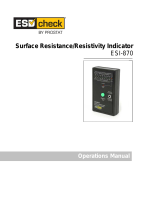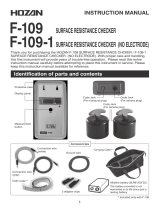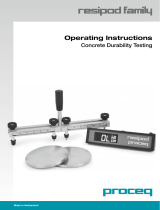
9
voltage is applied to establish continuity the resistance path created may become
altered permanently. It should be noted that loaded thermoplastic materials are
only effective in reducing the upper resistance limit to approximately 10
8
Ohms.
Another characteristic of loaded thermoplastic materials that affects the
resistance measurement is the microscopic insulative layer that develops on the
surface of the molded part. The dielectric of this layer must be broken down
before a resistance measurement can be made. Once this occurs the actual
resistance of the part may be lower than the measuring range of the
instrumentation used.
Essentially, these materials are non-linear and voltage dependent. Different test
voltages will give different results. Even the series resistor incorporated in
virtually all resistance meters vary from meter to meter and can cause
measurement variations. When measuring these materials the initial
measurement should be always be made first at V
e
= 10V then at 100V.
Another very important consideration in measuring surface resistance is the time
of electrification. This is the time for the effective capacitance of the material plus
the measuring probe and associated cables to charge up. At this time, the
current flow through the material reaches steady state and its flow is then a
function of only the resistance of the material.
Effective material capacitance is generally quite low. For low resistance
materials, the RC time constant, τ, is very short. On the other hand, for very high
resistance materials the time constant can become quite long.
Resistances that are measured before the full time of electrification has occurred
will appear to be lower than the actual resistance of the surface. This difference
can be several orders of magnitude. ASTM D 257 recommends a time of
electrification of 60 seconds, but in many measurements a shorter time may be
used or a longer time may be required. Typically for small sample specimens
with resistances less than 10
12
ohms, the of 5 to 30 second electrification time is
sufficient. On the other hand, large surfaces such as table tops, floors etc. the
capacitance is relatively large and 60 seconds may not be long enough. Here,
the user may either wait for complete electrification to obtain a true resistance
measurement or specify the measurement at the 60 second electrification time
point for a relative resistance measurement. A rule of thumb, “When in doubt,
allow more rather than less time!”
4.2 RESISTANCE CHARACTERIZATION
Over the years many different resistivity or resistance values have been assigned
to designate the various classifications of ESD material. Surface resistivity per
ASTM D257 was the most common specification used to classify materials.
















